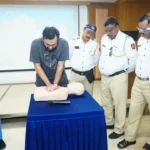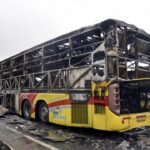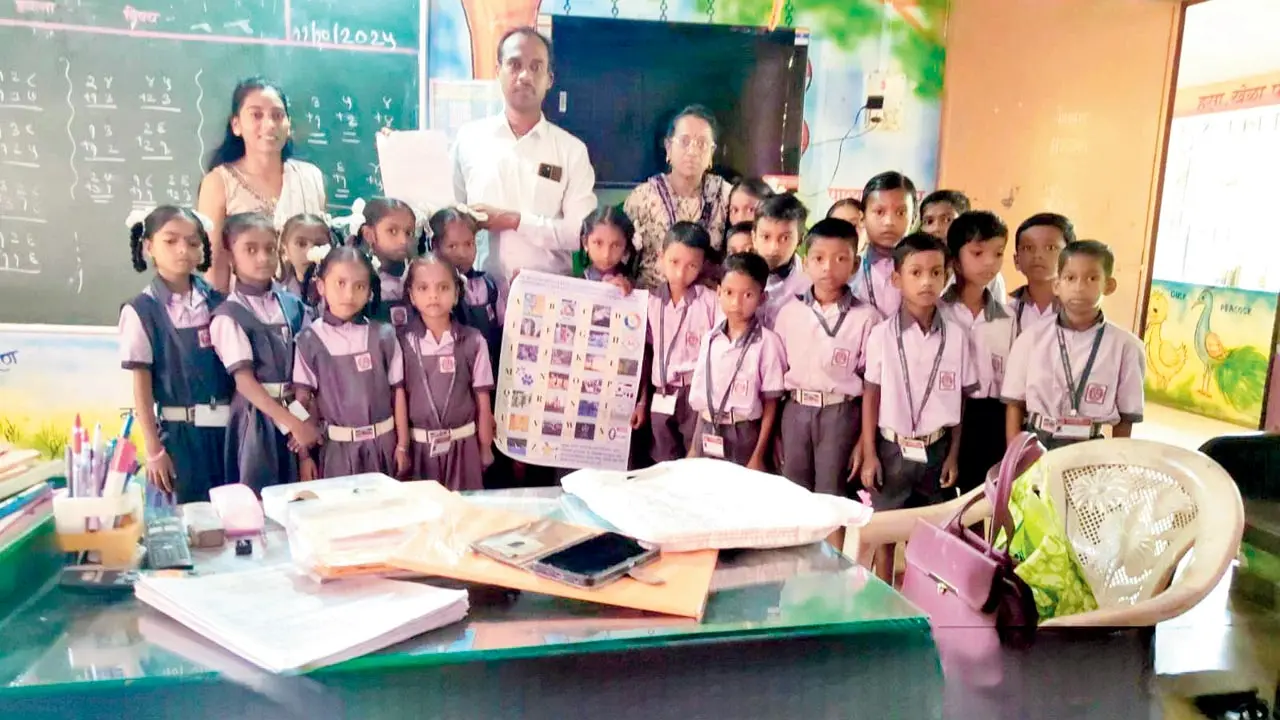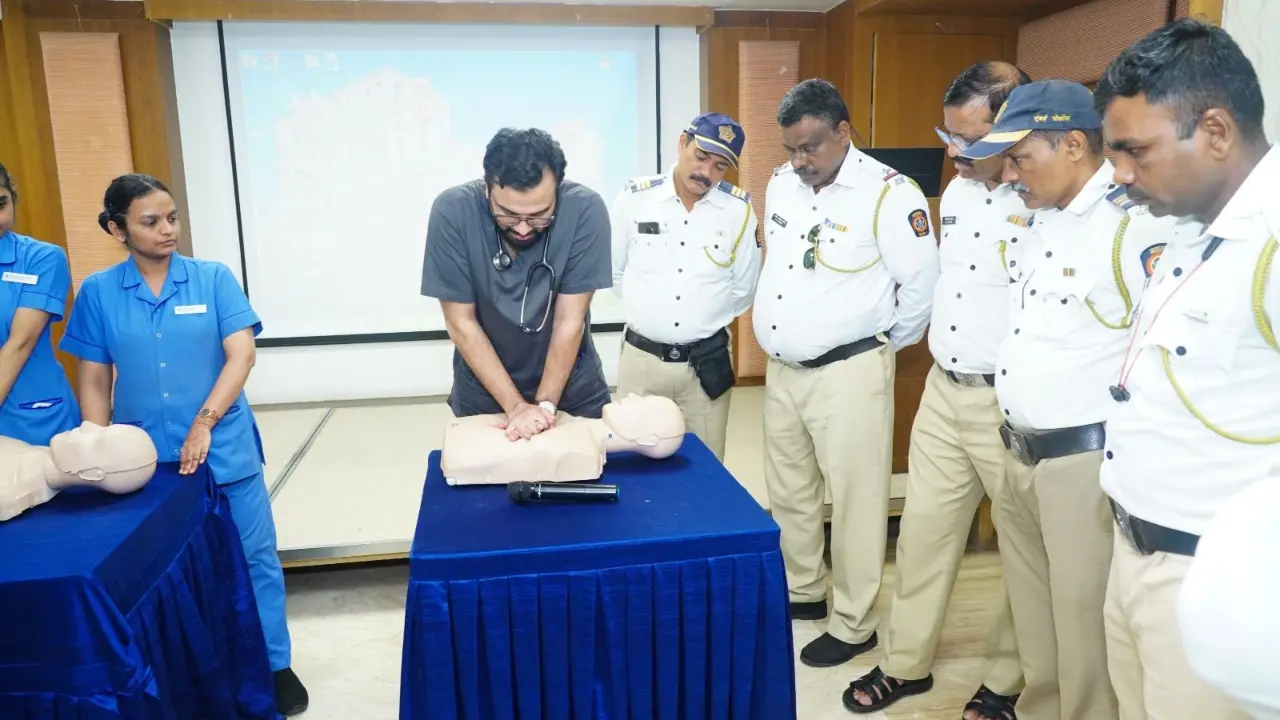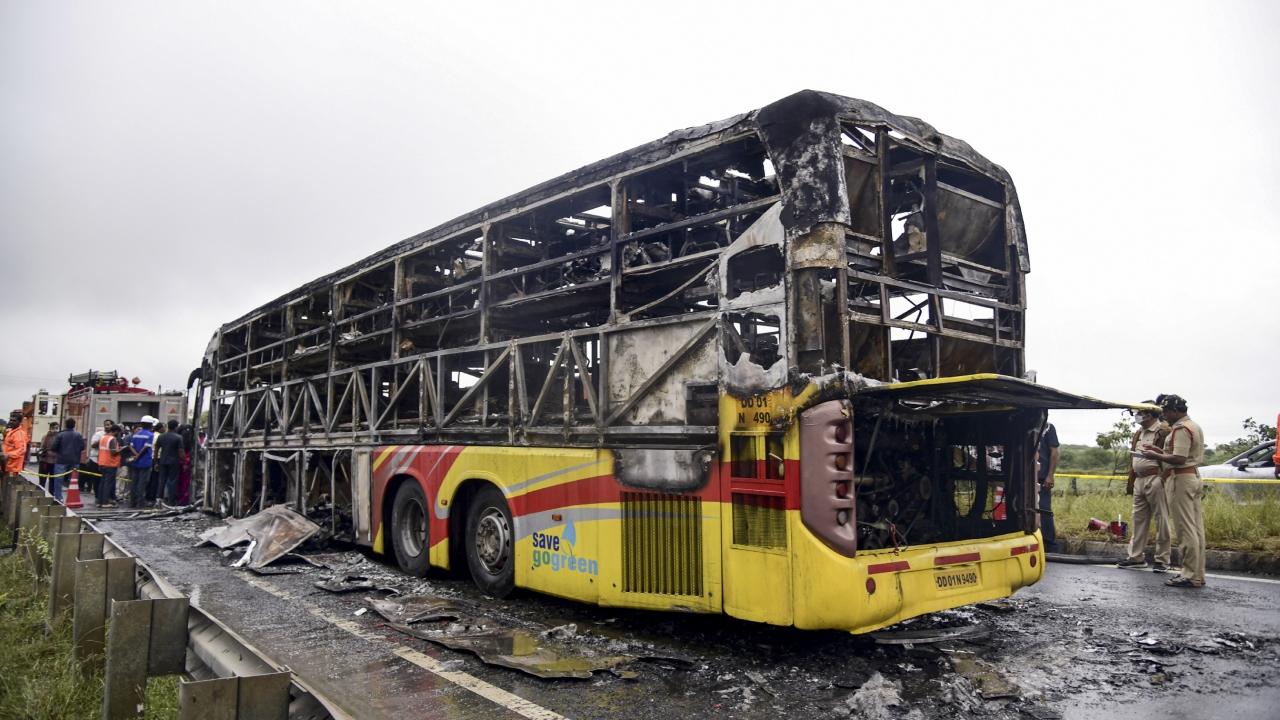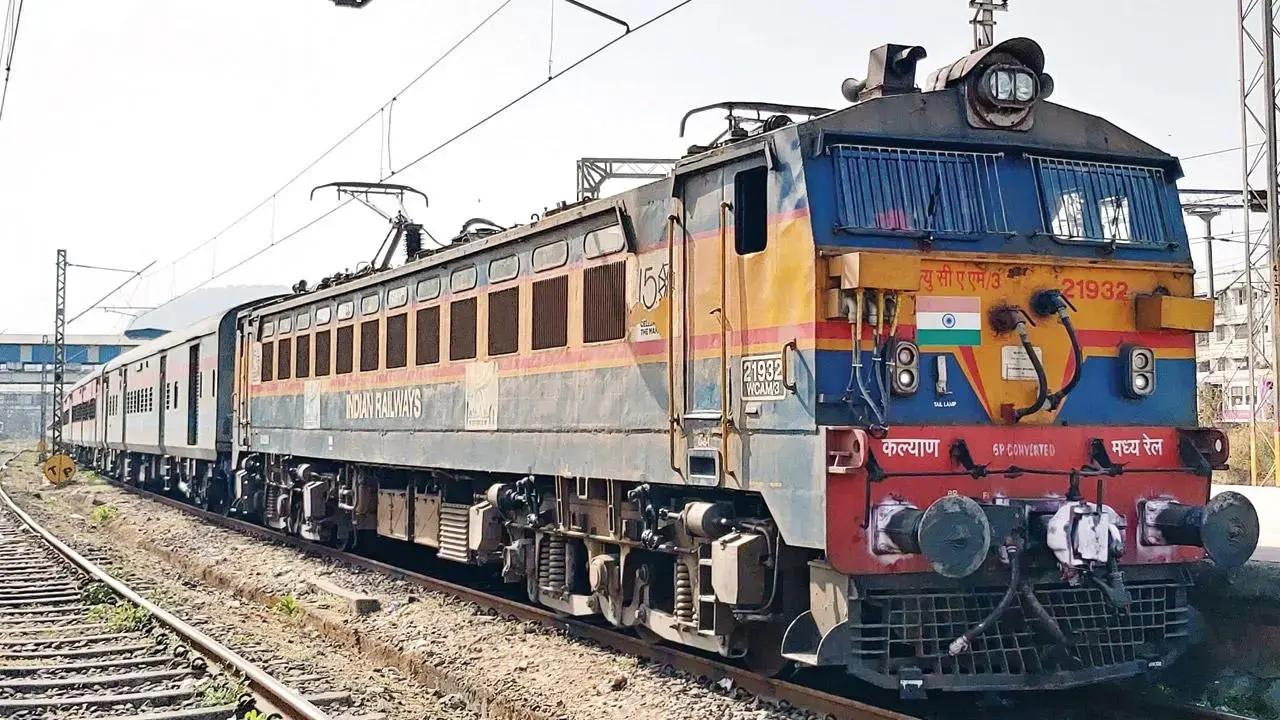The familiar “A for Apple” has just been replaced with “A for Alert” in government schools across Palghar, thanks to an innovative and deeply personal campaign by a district official. Vivekanand Kadam, chief of the District Disaster Management Cell, is funding and leading a volunteer-driven initiative that introduces a Disaster Management Alphabet Chart under the Disaster Management Early Education Campaign in zilla parishad schools. The goal: to make safety and preparedness part of early learning.
The idea was born from a personal moment last summer. “Sometime last year, my 16-month-old son suddenly started crying despite the fan and cooler running fine,” Kadam recalled. “I realised how real and immediate climate change has become. I’ve lived half my life, but my child’s life has just begun. I wanted to teach him about climate change and what to do in an emergency.”
Children at Kamare zilla parishad school participating in the Disaster Management Early Education Campaign; (right) students of Makunsar zilla parishad school reading the Disaster Management Alphabet chart. Pics/By Special Arrangement
That thought led him to design an alphabet chart for his son, one that replaced everyday words with those tied to disaster awareness. “I believe pre-education learning is crucial,” he said.
Op Sindoor showed gaps
The chart, once meant for his child, soon grew into a district-wide campaign after Operation Sindoor, a large-scale mock drill, revealed a worrying truth.
“During the drill, I realised that most people didn’t even know what to do during a cyclone or tsunami, or how to respond to emergency sirens,” Kadam said. “That’s when I decided disaster education must start with children.”
Now, zilla parishad students are learning that A is for Alert, B for Bunker, C for Cyclone, F for Flood, L for Landslide, M for Mitigation, and S for Search and Rescue.
The Disaster Management Alphabet chart introduced in Palghar schools
Official green light
Kadam’s campaign, which began on Kargil Vijay Diwas, has moved swiftly with strong support from the district administration. He met with Palghar Zilla Parishad CEO Manoj Ranade and obtained permission to distribute the charts across all zilla parishad schools. He also credits Palghar District Collector Dr Indu Rani Jakhar for her encouragement and support.
“Children must learn about disasters from the beginning,” said Ranade. “Schools can teach them, and families can learn from them. The idea is to make people aware, not afraid. The objective is very good.” He added that while no formal funding discussions have started yet, the campaign is still in its early phase.
Vivekanand Kadam, chief of the District Disaster Management Cell
“It is a very good initiative. We are already discussing how to integrate it at the grassroots level across all schools,” said Dr Jakhar. “I printed 100 charts and distributed them during a Kargil Day event. Out of those, 72 charts have been given to schools, one per school, reaching over 3600 students across the 2600 zilla parishad schools in Palghar district,” Kadam said.
The charts are not just educating children; they’re influencing entire families. “If we teach children when they’re young, they’ll go home and teach their parents too,” Kadam said. The initiative, he added, is a practical step toward a ‘Safe India, Aware India.’
Challenges ahead
The campaign is largely self-funded by Kadam. “I’ve funded this campaign personally and have around six to seven volunteers supporting me,” he said. Each chart costs around Rs 50 and is used on a rotational basis across schools.
Funding, however, isn’t the only hurdle. “Sometimes children ask why they are learning this and what it means. We explain to them how important disaster management is,” Kadam said. “Funds are limited, but we’re doing our best. My goal is to reach every Zilla Parishad school in Palghar within a year.”
Young citizens in the making
Despite challenges, the response from students has been enthusiastic.
“The children are showing great interest in learning something new every day. I even distribute charts to them on their birthdays or whenever I get an opportunity,” Kadam shared.
Third-grader Malhar said, “I’ve learned that during floods, we should go to a high place. If we stay alert, we stay safe.” Another student, Ganesh, added, “Now I know that during a storm or earthquake, we must go to a safe shelter. That keeps us protected.”
Teachers see the Disaster Management Alphabet as more than just an educational tool. “It’s shaping children into responsible citizens from a young age. Campaigns like this are truly needed; it’s a timely and impactful initiative,” said one teacher. Kadam’s ultimate goal is to expand beyond Palghar. “I want this campaign to reach schools across India, and even globally, so that the next generation can face any crisis with awareness and preparedness,” he said.



